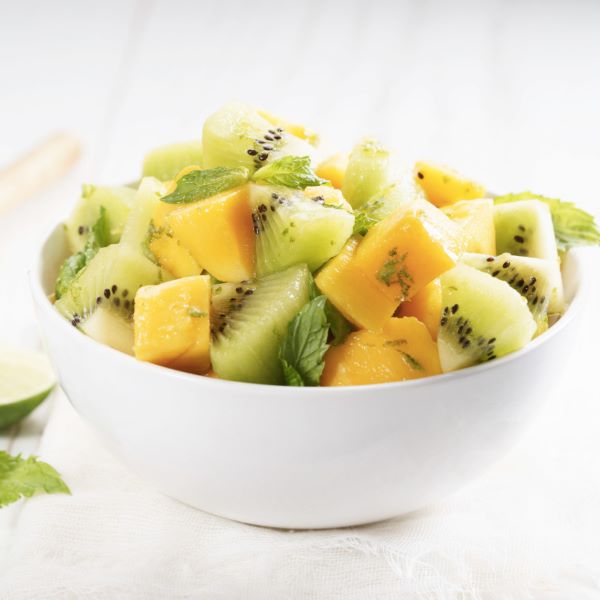Kiwi, also known as kiwifruit, is a delicious and nutrient-rich fruit that has gained popularity worldwide. Native to China and named after the flightless bird from New Zealand, kiwi comes in several varieties, each with its unique characteristics, flavors, and growing regions. Here, we explore some of the most notable kiwi fruit varieties, including their origins, history, where they are found, availability, and unique properties.
Contents
1. Hayward
- Origin: New Zealand
- History: Developed by Hayward Wright in the early 20th century, this is the most common and widely consumed kiwi variety.
- Found in: New Zealand, Italy, Chile, Greece, and the USA
- Availability: October to May
- Unique Property: Known for its bright green flesh, small black seeds, and sweet-tart flavor. It has a fuzzy brown skin and is rich in vitamin C and dietary fiber.
2. Golden Kiwi (Zespri SunGold)
- Origin: New Zealand
- History: Developed by Zespri International, this variety is a result of selective breeding to create a sweeter, less tangy fruit.
- Found in: New Zealand, Italy, Chile, and Greece
- Availability: May to November
- Unique Property: Known for its smooth, hairless golden skin and sweet, tropical flavor. The flesh is yellow and has a higher vitamin C content than the green variety.
3. Arctic Kiwi (Hardy Kiwi)
- Origin: China, Japan, Korea
- History: Known scientifically as Actinidia arguta, this variety can withstand colder climates and is smaller than traditional kiwis.
- Found in: USA, Canada, Russia, and northern China
- Availability: September to November
- Unique Property: Known for its smooth, edible skin and small size. It has a sweet flavor similar to the green kiwi but is easier to eat as a whole fruit.
Also, read: Different Types of Orange Varieties You Need to Know Now
4. Baby Kiwi (Kiwi Berry)
- Origin: China
- History: This small, grape-sized variety is a close relative of the Arctic Kiwi and has been cultivated for its unique properties.
- Found in: USA, Canada, Europe, and New Zealand
- Availability: September to November
- Unique Property: Known for its smooth, edible skin and sweet, tangy flavor. It can be eaten whole, making it a convenient snack.
5. Red Kiwi
- Origin: China
- History: Developed from a natural mutation and selectively bred to enhance its color and flavor.
- Found in: China, New Zealand, and Europe
- Availability: October to March
- Unique Property: Known for its striking red flesh and unique flavor profile, which is sweeter and less tangy than green kiwis. The skin is also smooth and hairless.
6. Bruno
- Origin: New Zealand
- History: Another variety developed in New Zealand, known for its high yield and vigorous growth.
- Found in: New Zealand, Italy, and France
- Availability: October to May
- Unique Property: Known for its elongated shape, hairy brown skin, and sweet-tart flavor. It is often used for juicing and canning due to its high vitamin C content.
7. Jintao (Yellow Kiwi)
- Origin: China
- History: Developed in China and introduced to international markets for its unique color and flavor.
- Found in: China, New Zealand, Italy, and France
- Availability: November to April
- Unique Property: Known for its yellow flesh and smooth skin. It has a sweet, tropical flavor and is high in vitamins C and E.
Also, watch web stories: Ways to Reduce Toxins in Your Home Environment
8. Abbott
- Origin: New Zealand
- History: A well-established variety in New Zealand, known for its early harvesting season.
- Found in: New Zealand, Italy, and France
- Availability: May to November
- Unique Property: Known for its small to medium size, sweet-tart flavor, and high vitamin C content. It has a fuzzy brown skin and bright green flesh.
9. Monty
- Origin: New Zealand
- History: Another early-season variety developed in New Zealand, appreciated for its unique taste.
- Found in: New Zealand and Italy
- Availability: May to November
- Unique Property: Known for its medium size, oval shape, and sweet flavor. It has a high vitamin C content and is used both for fresh consumption and processing.
10. Saanichton 12
- Origin: Canada
- History: Developed in Canada, this variety is known for its adaptability to cooler climates.
- Found in: Canada and northern USA
- Availability: September to November
- Unique Property: Known for its larger size and sweet-tart flavor. It has a smooth, hairless skin and is suitable for fresh eating and baking.
Nutrition Chart of Kiwifruit
Kiwifruit is not just delicious but also packed with essential nutrients. Here’s a general nutritional profile of kiwifruit per 100 grams:
| Nutrient | Amount |
|---|---|
| Calories | 61 kcal |
| Carbohydrates | 14.7 g |
| Sugars | 8.99 g |
| Dietary Fiber | 3 g |
| Protein | 1.1 g |
| Fat | 0.5 g |
| Vitamin A | 4 µg |
| Vitamin C | 92.7 mg |
| Vitamin E | 1.5 mg |
| Vitamin K | 40.3 µg |
| Potassium | 312 mg |
| Magnesium | 17 mg |
| Phosphorus | 34 mg |
| Folate | 25 µg |
| Calcium | 34 mg |
| Iron | 0.3 mg |
| Zinc | 0.14 mg |
| Thiamine (B1) | 0.027 mg |
| Riboflavin (B2) | 0.025 mg |
| Niacin (B3) | 0.341 mg |
| Vitamin B6 | 0.63 mg |





